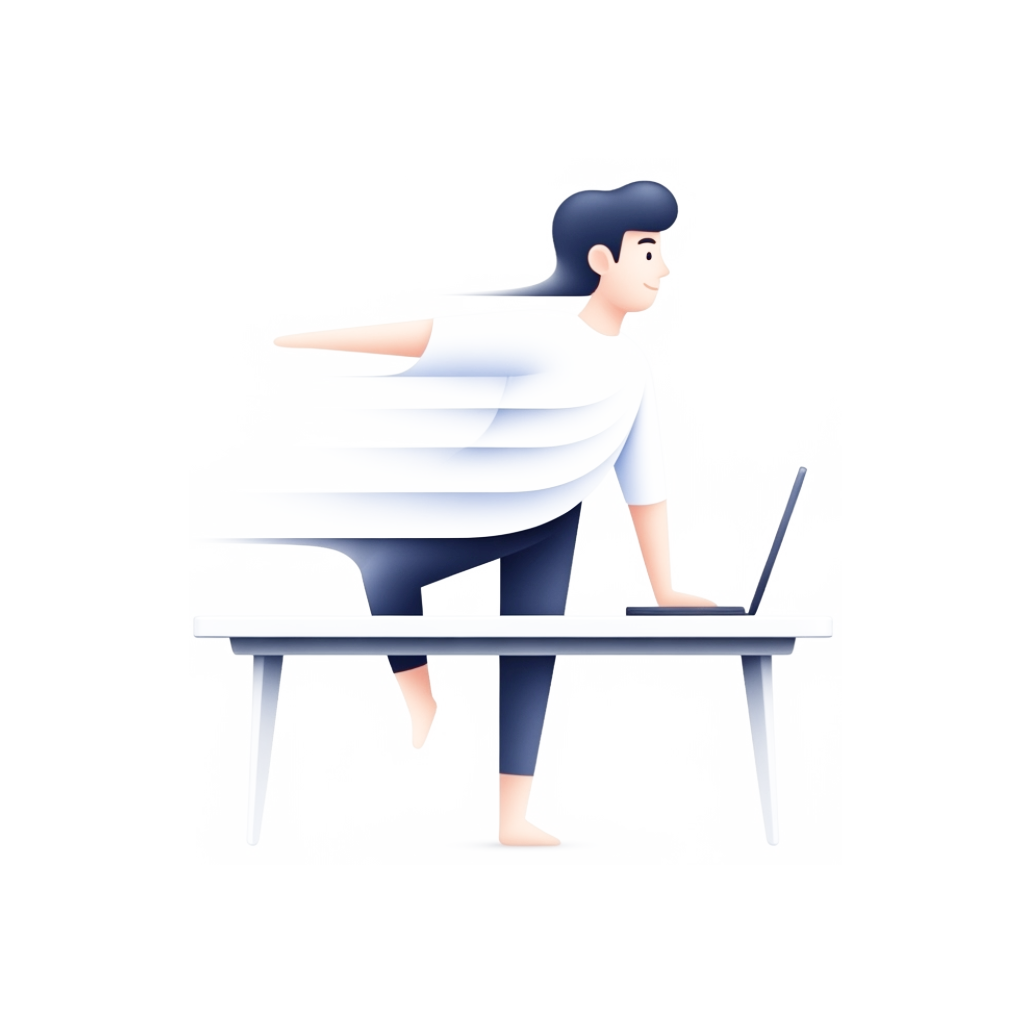Top Benefits and Stretches for Using a Standing Desk

Top Benefits and Stretches for Using a Standing Desk
In today’s world, many people spend a significant portion of their day sitting at a desk, which can negatively impact health and productivity. Incorporating standing desks and regular movement breaks into your work routine can counteract these effects. This blog explores the benefits of standing desks, essential stretching exercises you can do at your workstation, and how our app’s standing reminders support your wellness throughout the day.
Why Use a Standing Desk?Extended periods of sitting increase risks for obesity, cardiovascular disease, poor posture, and muscle weakness. Standing desks help mitigate these risks by encouraging you to stand and move throughout your workday.
By allowing you to adjust your workstation to the right height, standing desks promote better posture by activating underutilized muscles such as the glutes and hamstrings, which often weaken from too much sitting. This activation helps prevent muscle atrophy and the overcompensation strain caused by uneven muscle use.
Health Benefits of Standing and Movement BreaksLower back and neck pain are common complaints among desk workers. Standing desks can reduce these issues by improving posture and engaging core muscles, which supports the spine and reduces strain.
Research shows that standing and moving regularly can lower risks associated with prolonged sitting, such as cardiovascular disease and metabolic problems, potentially leading to a longer and healthier life.
Taking movement breaks every 30 minutes increases circulation, helps maintain muscle flexibility, and reduces stiffness, improving overall comfort and productivity.
Top 5 Standing Desk Stretches to Add MovementIntegrating simple stretches into your day at your standing desk can alleviate muscle tension and restore proper muscle length and balance. Here are five easy stretches to try, each held for about 30 seconds and repeated twice per side:
-
Hamstring Stretch: Place one leg on a chair or stool, lean forward at the hips, and reach for your toes.
-
Quadriceps Stretch: Hold your standing desk for balance, pull one foot toward your rear to stretch your thigh.
-
Back Stretch: With hands on the desk, bend at the hips and lower your upper body between your arms.
-
Chest Stretch: Stand facing away from desk, place hands on the desk behind you, and lift your chest.
-
Core Stretch: Place one hand on the desk and twist away to stretch your core muscles.
Choosing and Using Your Standing Desk EffectivelyWhen selecting a standing desk, look for one that is height-adjustable to fit your personal ergonomic needs. Having a comfortable stool nearby allows you to alternate sitting, standing, and resting easily.
Using accessories like anti-fatigue mats supports your legs by encouraging small muscle movements that promote circulation, reducing fatigue from standing.
Our wellness app complements your standing desk by providing gentle reminders to stand, stretch, and take movement breaks regularly, helping you maintain a healthy, active work routine.
Ergonomic Tips for a Healthy WorkspaceEnsure your computer screen is at eye level to avoid neck strain, with your eyes hitting the center of the monitor as you look forward.
Maintain an ergonomic seating position when sitting: feet flat on the floor, hips and knees at 90 degrees, and lumbar support for your lower back.
Switch between sitting and standing thoughtfully—studies suggest standing for 6 to 15 minutes at a time improves comfort without causing fatigue.
Conclusion
Incorporating a standing desk into your workspace, combined with regular movement and stretching, can significantly improve your posture, reduce pain, and boost your overall health and productivity. Our app’s standing reminders and movement break alerts make it easier than ever to build these healthy habits into your daily routine. Start standing more, stretching often, and feeling better throughout your workday!
Sources:
